Discover Japan: 24 Incredible Ways to Immerse Yourself in the Country's Culture and Beauty
Japan, a country that effortlessly blends ancient traditions with modern innovation, is a destination that sparks all the senses. From the gentle chime of temple bells and the serenity of capsule hotels to the vibrant colors of outdoor sculptures and the aromatic steam rising from pine-forest hot springs, Japan offers an unparalleled sensory experience. The culinary delights alone, with their umami flavors and exquisite presentation, are enough to make any traveler's mouth water. With so many incredible attractions packed into one country, it can be overwhelming to decide where to begin. Fear not, as we've curated a list of the best things to do in Japan, both celebrated and under the radar. Join us on a journey through the Land of the Rising Sun and discover the magic that awaits you.
Japan
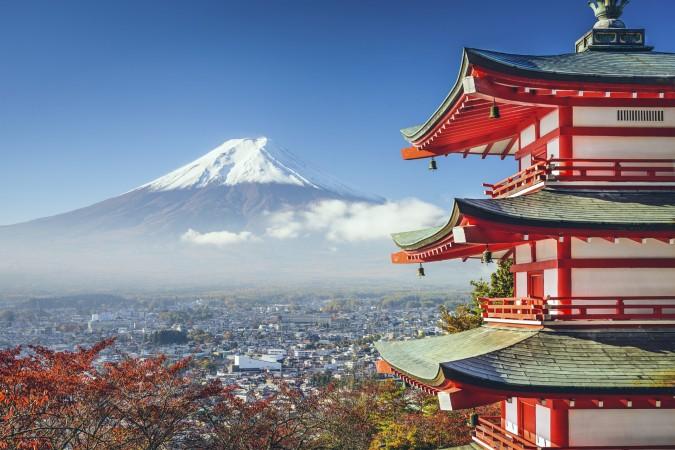
Savor Authentic Japanese Cuisine
Japan is a food lover's paradise, with an endless array of mouthwatering dishes to tantalize your taste buds. From the sizzle of okonomiyaki seafood pancakes on a hotplate to the wafting aromas of charcoal-grilled yakitori chicken skewers, the culinary experiences in Japan are second to none. Izakaya, casual bar-restaurants, are perfect for groups looking to sample a variety of nabemono hotpot dishes, Kobe and wagyu beef, sashimi, and grilled fish. Solo travelers and picky eaters can delight in the novelty of kaiten-zushi, conveyor-belt sushi restaurants where you can pick and choose your favorite pieces. Don't miss out on modern Japanese snacks like fluffy hotcakes, omurice (rice-filled omelet with ketchup), and Instagram-worthy strawberry-and-cream sandwiches. For a truly local experience, head to a teishoku restaurant and order a set menu, complete with rice and miso soup, allowing you to sample a bit of everything.
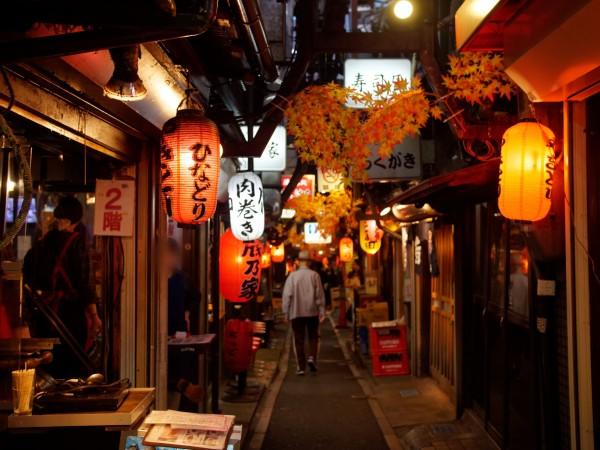
Immerse Yourself in Festivals and Cherry Blossoms
Japan is a country that loves to celebrate, and there's no shortage of matsuri (festivals) throughout the year. From snow festivals in Sapporo to summer bashes in Kyoto, these events showcase traditional dancers, drummers, and street food, all amidst a sea of lanterns and fireworks. The most iconic celebration, however, is the cherry blossom viewing season, which marks the end of winter and the beginning of spring. Mount Yoshino, the Fuji Five Lakes region, and the castles of Hirosaki are just a few of the top spots to witness the breathtaking pink and white blooms. If you find yourself in Kyoto during July, don't miss the Gion Matsuri, where giant floats parade through the streets and locals don elegant yukata (cotton robes).
Cycle the Scenic Shimanami Kaido
For a truly unique way to explore Japan's natural beauty, hop on a bike and pedal your way along the Shimanami Kaido, a 70km (43-mile) cycling route that connects six islands in the Seto Inland Sea. This blue-painted path winds through jade mountains, orange groves, and past secluded beaches, offering breathtaking views at every turn. Stop to visit a museum dedicated to local painters, discover hidden shrines with panoramic sea vistas, and detour to the even more remote Tobishima Kaido cycle route for an off-the-beaten-path adventure.
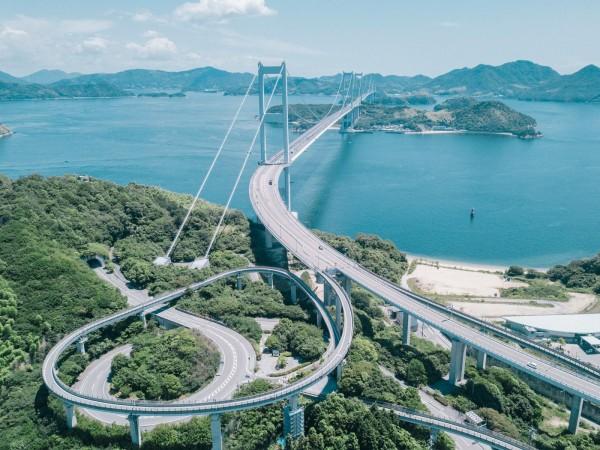
Sip Sake in Saijō
Sake, Japan's beloved rice wine, has a history dating back over 2,000 years. In the town of Saijō, where some breweries have been producing sake for more than 150 years, you can experience the art of sake tasting in a serene and meditative setting. Begin your journey at the Kamotsuru Sake Brewing Company, where you can observe the brewing process and sample the same gold-leaf sake that was once served to U.S. President Obama by the late Japanese President Abe. As you make your way through the town's eight whitewashed breweries, each with its own distinctive character, you'll develop a newfound appreciation for this ancient beverage and the craftsmanship behind it.
Step Back in Time in Kyoto
Kyoto, with its 2,000+ temples and shrines, is a living testament to Japan's rich history and traditions. The gold-leaf tiers of Kinkaku-ji, a Zen temple whose beams glisten in the sun and cast a mirror image onto the pond below, is an absolute must-see. Japanese gardens, with their minimalist designs and carefully placed elements, offer a space for quiet reflection and meditation. The Zen garden at Ryōan-ji, with its mysterious arrangement of 15 rocks, is particularly intriguing. To fully immerse yourself in Kyoto's timeless charm, stroll through the lantern-lit streets of Gion, the city's historic geisha district, and imagine yourself transported to the 17th century.
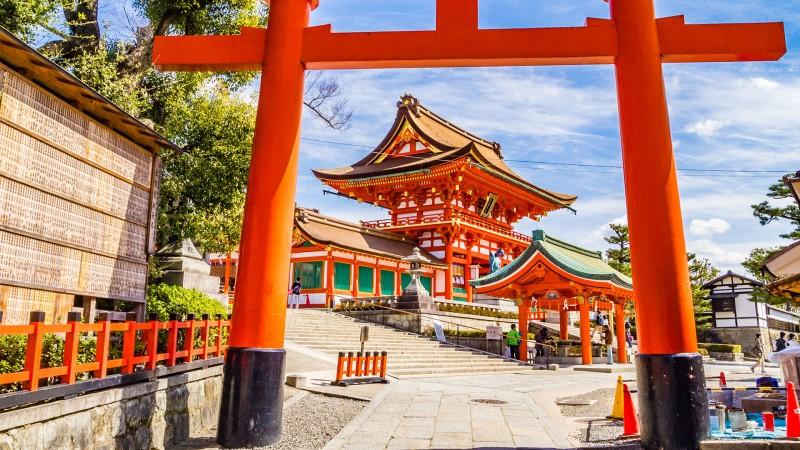
Zoom Across the Country on a Bullet Train
Japan's bullet trains, or shinkansen, are a marvel of modern engineering, whisking passengers across the country at speeds of up to 320 kph (199 mph). With their sleek, aerodynamic designs and comfortable interiors, these trains offer a glimpse into the future of transportation. Watch as skyscrapers transform into pine forests and rural landscapes in the blink of an eye, and marvel at the efficiency and punctuality of the Japanese rail system. For the best value, consider purchasing a JR Pass or other all-inclusive train ticket before your trip, and use the Japan Official Travel App to plan your itinerary and compare costs.
Dive into Anime Culture in Akihabara and Den Den Town
For anime enthusiasts, a visit to Tokyo's Akihabara district or Osaka's Den Den Town is an absolute must. These neighborhoods are a neon-lit wonderland of anime, manga, video games, and collectibles, where the line between fantasy and reality blurs. Even if you're not a die-hard fan, the sheer energy and dedication of the otaku (fanatics) who frequent these areas are a sight to behold. Lose yourself in the towering stacks of manga, try your luck at the gashapon toy machines, and snap a photo with cosplayers dressed as your favorite characters. For a more family-friendly anime experience, head to the Ghibli Museum in West Tokyo, where the whimsical worlds of Studio Ghibli come to life.
Indulge in a Kaiseki Feast
Kaiseki, a traditional multi-course meal that showcases the best of Japanese cuisine and artistry, is an experience not to be missed. Rooted in 16th-century tea ceremonies, kaiseki dining emphasizes the use of fresh, seasonal ingredients presented in an aesthetically pleasing manner. A typical kaiseki meal might begin with a course of sea urchin and horsehair crab, followed by a soup and a seasonal platter featuring sushi and Kameoka beef. Subsequent courses highlight sashimi, color-coordinated vegetables, tofu, grilled fish, sake, and rice, with a sweet dessert to round out the meal. Each dish is a miniature work of art, often adorned with edible flowers or leaves that reflect the current season. For an unforgettable kaiseki experience, head to Kikunoi in Kyoto, or opt for a more budget-friendly tea ceremony to sample some of the rituals and traditions associated with this culinary art form.
Dive into Tokyo's Vibrant Nightlife
Tokyo's nightlife scene is a kaleidoscope of music, lights, and energy, with something to suit every taste. Dance the night away at clubs like Womb, known for its house music, or Atom Tokyo, a haven for EDM lovers. If live music is more your style, head to Shimokitazawa (affectionately known as "Shimokita"), where punk, metal, and indie bands take the stage at numerous venues. For a glimpse into Tokyo's progressive side, visit the gay clubs of Shinjuku-Nichōme, where the LGBTIQ+ community comes together to celebrate diversity and inclusivity. If you prefer a more laid-back evening, seek out one of Tokyo's exceptional whiskey bars, such as the hidden gem Bar Benfiddich, where expert mixologists craft bespoke cocktails in a speakeasy-style atmosphere.
Discover the Wonders of Japanese Convenience Stores
Japanese convenience stores, or konbini, are a world apart from their Western counterparts. These 24-hour oases offer an astonishing array of high-quality snacks, meals, and beverages, making them an essential part of any trip to Japan. Grab a fresh onigiri (rice ball) filled with salmon or plum, or opt for a neatly packaged bento box featuring sushi, grilled fish, or tempura. The hot food section offers delights like nikuman (steamed pork buns) and oden (a comforting winter stew), while the candy, beer, and green tea aisles are a treasure trove of unique flavors and limited-edition items. Don't forget to pick up some Japanese Kit Kats in matcha, sakura, or sweet potato varieties for a tasty souvenir. With reliable chains like Family Mart, 7-Eleven, and Lawson dotting the landscape, you're never far from a satisfying konbini experience.
Soak Your Cares Away in an Onsen
Onsen, or natural hot springs, are a beloved part of Japanese culture, offering a chance to unwind, rejuvenate, and embrace the country's volcanic landscape. With a history spanning over 3,000 years, onsen can be found throughout Japan, from humble public bathhouses to luxurious resorts nestled in serene gardens. As you slip into the steaming, mineral-rich waters, feel your worries melt away and your muscles relax. Many onsen are located outdoors, allowing you to bask in the beauty of your surroundings, whether it's a snow-dusted pine forest or a tranquil bamboo grove. For the full experience, stay at a traditional ryokan (inn) with its own onsen, or visit resort towns like Kusatsu and Beppu, where you can hop between different baths and even sample the waters in free public foot baths. Just remember to thoroughly cleanse yourself before entering the onsen and embrace the nudity – it's all part of the tradition!
Channel Your Inner Samurai at Japanese Castles
Step into the world of feudal Japan with a visit to one of the country's many stunning castles. These architectural marvels, once home to powerful samurai lords, now stand as testaments to Japan's rich history and craftsmanship. Himeji-jō, a UNESCO World Heritage Site and arguably the most magnificent of Japan's castles, beckons with its brilliant white exterior and sprawling complex of 83 buildings. Climb to the top of the keep for panoramic views, and explore the former princess' residence for a glimpse into the lives of Japanese nobility. For a more off-the-beaten-path experience, head to the mountain town of Tsuwano, where samurai residences line the streets and golden carp swim in the picturesque canal. Immerse yourself in the town's timeless charm as you visit former samurai houses and ascend the hillside to the local temple, surrounded by hundreds of vibrant torii gates.
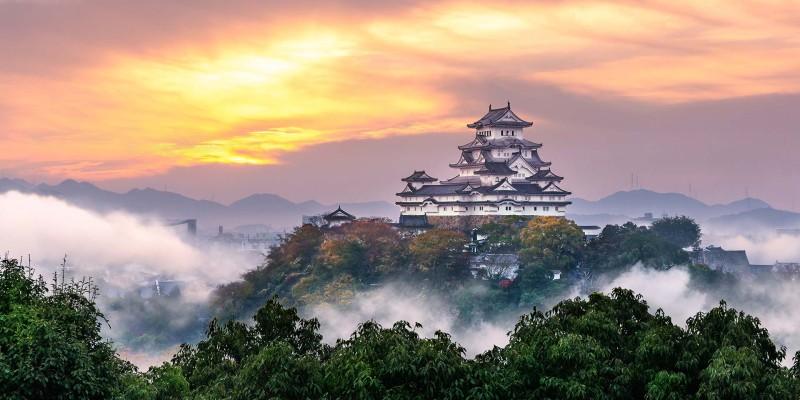
Experience Art in Nature on Naoshima and in Hakone
Japan's natural beauty serves as the perfect backdrop for its thriving contemporary art scene, and nowhere is this more apparent than on the island of Naoshima and in the hills of Hakone. On Naoshima and the surrounding islands, you'll discover a fascinating fusion of art, nature, and history, with traditional buildings transformed into immersive installations that reflect the area's unique character. Don't miss the iconic Yellow Pumpkin sculpture by Yayoi Kusama, perched at the end of a jetty and offering a playful contrast to the blue sea and sky. In Hakone, just a short trip from Tokyo, the Open-Air Museum showcases an impressive collection of sculptures by renowned Japanese and international artists, seamlessly integrated into the stunning landscape. As you wander through the park, appreciate how the changing seasons and light add new dimensions to the artworks, creating a truly unforgettable experience.
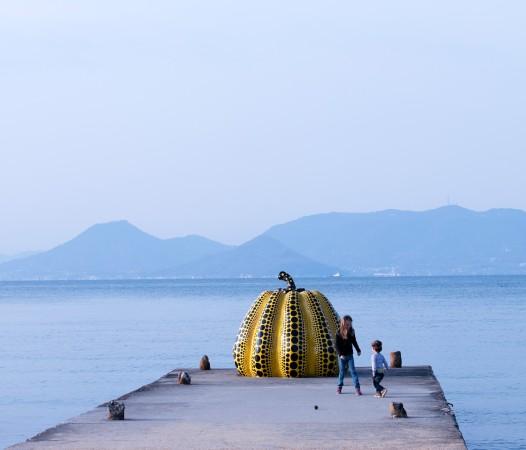
Immerse Yourself in Tradition at a Ryokan
For a taste of authentic Japanese hospitality and culture, spend a night or two at a ryokan, a traditional inn that embodies the essence of simplicity and tranquility. As you step into your room, take in the beauty of the tatami mat floors, shoji paper screens, and minimalist décor. Change into your comfortable yukata (cotton robe) and indulge in a multi-course kaiseki dinner, featuring the finest regional ingredients and impeccable presentation. After your meal, unwind in the ryokan's onsen or take a leisurely stroll through the manicured gardens. As night falls, settle into your plush futon and let the peaceful atmosphere lull you into a restful sleep. Staying at a ryokan is an opportunity to slow down, appreciate the finer details, and connect with Japan's rich cultural heritage – an experience that will stay with you long after your journey ends.
Embrace Winter's Magic in Hokkaidō
While Japan is often associated with cherry blossoms and vibrant autumn foliage, the northern island of Hokkaidō offers a winter wonderland that is equally captivating. As snow blankets the landscape, transforming temples, trees, and hot springs into ethereal scenes, Hokkaidō comes alive with a host of cold-weather delights. Hit the slopes at one of the island's many ski resorts, renowned for their powdery snow and diverse terrain, or explore the backcountry on a snowshoe or cross-country ski adventure. In February, head to Sapporo for the annual Snow Festival, where enormous ice sculptures and intricate snow carvings take center stage, and indulge in hearty winter dishes like warm oden stew and buttery Hokkaido crab. For a truly unforgettable experience, visit the Jigokudani Monkey Park to witness wild macaques soaking in the steaming onsen, their fur frosted with snow – a sight that captures the magic and beauty of Japan's winter months.
Dive into Digital Art at teamLab Planets
Step into a world where art, technology, and imagination collide at teamLab Planets, a groundbreaking museum in Tokyo that pushes the boundaries of immersive experiences. As you wander through the museum's interconnected "planets," you'll find yourself surrounded by dazzling digital projections that respond to your movements and interactions. Walk through knee-deep water as colorful koi fish dart beneath your feet, triggering ripples and light effects, or find yourself engulfed in a room filled with floating, color-changing spheres that create a mesmerizing, otherworldly atmosphere. The exhibits at teamLab Planets seamlessly blend the physical and digital realms, inviting visitors to become active participants in the art rather than mere observers. This unique fusion of cutting-edge technology and artistic vision creates an experience that is both captivating and thought-provoking, challenging traditional notions of what art can be and how we engage with it.
Savor the Flavors of Fresh Sushi and Sashimi
Japan's cuisine is renowned for its emphasis on fresh, high-quality ingredients, and nowhere is this more apparent than in the world of sushi and sashimi. As the largest fish-eating nation in the world, Japan takes great pride in the art of preparing and presenting these delicacies. For a true taste of the country's culinary prowess, visit one of its many fish markets, such as Tokyo's famous Toyosu Market or the charming Karato Ichiba in Shimonoseki. Here, you'll find an astonishing array of seafood, from glistening cuts of tuna and salmon to plump shellfish and exotic specialties like pufferfish. Many markets also feature small sushi restaurants where you can sample the day's catch, prepared with the utmost skill and attention to detail. For a more upscale experience, treat yourself to an omakase meal at a high-end sushi-ya, where the chef will craft a personalized selection of sushi and sashimi based on your preferences and the best ingredients available. Whether you're a sushi aficionado or a curious newcomer, exploring Japan's sushi and sashimi scene is a delicious and unforgettable journey into the heart of the country's culinary culture.
Find Serenity at a Shinto Shrine
Shinto shrines are sacred spaces that offer a window into Japan's spiritual traditions and provide a tranquil escape from the bustling modern world. As you approach a shrine, marked by its distinctive torii gate, you'll find yourself immersed in an atmosphere of serenity and reverence. Visitors typically begin by performing a purification ritual at the temizuya, a water pavilion where you can cleanse your hands and mouth before entering the main shrine grounds. Once inside, take a moment to appreciate the intricate architecture, natural surroundings, and peaceful ambiance. Many shrines feature a wall of ema, small wooden plaques on which visitors can write their prayers or wishes for the resident kami (deities) to read. Whether you're seeking blessings for a specific aspect of your life or simply looking to reflect and find inner peace, visiting a Shinto shrine is a profound and enriching experience that connects you with Japan's ancient spiritual roots.
Unwind in a Charming Seaside Town
Japan's lengthy coastline is dotted with picturesque seaside towns that offer a refreshing change of pace from the country's bustling cities. These charming destinations are perfect for unwinding, soaking up the laid-back atmosphere, and savoring the simple pleasures of life by the sea. In Tomonoura, a port town that inspired the animated film "Ponyo," you'll find yourself enchanted by the bobbing fishing boats, verdant hills, and historic buildings that seem frozen in time. Kamakura, located just a short train ride from Tokyo, entices visitors with its stunning beaches, iconic Great Buddha statue, and charming shopping streets lined with traditional crafts and tempting seafood restaurants. For a truly off-the-beaten-path experience, venture to the remote Oki Islands, where rugged coastlines, crystal-clear waters, and a slow pace of life create an atmosphere of pure relaxation. No matter which seaside town you choose, you'll find yourself captivated by the unique blend of natural beauty, cultural heritage, and warm hospitality that defines Japan's coastal communities.
Discover Hope and Resilience in Hiroshima
A visit to Hiroshima is a powerful and moving experience that showcases the city's remarkable journey from devastation to revival. While the atomic bombing of 1945 left an indelible mark on Hiroshima's history, the city has emerged as a beacon of peace, resilience, and hope. The Peace Memorial Park, located in the heart of the city, serves as a poignant tribute to the lives lost and a compelling reminder of the importance of global harmony. As you explore the park's memorials and monuments, including the iconic Atomic Bomb Dome and the Children's Peace Monument, you'll be struck by the stories of suffering, courage, and compassion that they embody. The adjacent Peace Memorial Museum offers a thoughtful and informative look at the events leading up to the bombing, its devastating aftermath, and the city's ongoing efforts to promote peace and nuclear disarmament. Despite its somber history, present-day Hiroshima is a vibrant, welcoming city with a thriving food scene, beautiful gardens, and a warm, friendly atmosphere that reflects the strength and optimism of its people. A visit to Hiroshima is an opportunity to confront the past, contemplate the present, and be inspired by the city's unwavering commitment to a brighter, more peaceful future.
Slurp Your Way Through Japan's Ramen Scene
Ramen, the humble bowl of noodles and broth that has captured the hearts and appetites of food lovers around the world, is an essential part of Japan's culinary landscape. From tiny, no-frills ramen-ya to Michelin-starred establishments, the country boasts an incredible variety of regional styles and flavor profiles that will keep your taste buds entertained and your belly satisfied. In Tokyo, the birthplace of many iconic ramen styles, you can sample classic shoyu (soy sauce) and miso-based broths, as well as the rich, creamy tonkotsu (pork bone) broth that has become a global sensation. Venture to other regions, and you'll discover local specialties like the clear, chicken-based broth of Kitakata ramen or the spicy, ginger-infused broth of Kagoshima. No matter where you slurp, be sure to customize your bowl with toppings like tender chashu pork, soft-boiled eggs, and crisp bamboo shoots, and don't forget to pair it with a plate of crispy gyoza dumplings for the ultimate comfort food experience. Exploring Japan's ramen scene is a delicious and addictive journey that will leave you craving just one more bowl.
Catch a Wave at Japan's Best Surf Spots
While Japan may not be the first destination that comes to mind when you think of surfing, the country boasts a thriving surf culture and a diverse range of breaks that cater to all skill levels. From the warm, crystal-clear waters of Okinawa to the powerful, consistent swells of Shikoku, Japan offers a unique and memorable surfing experience that combines world-class waves with stunning natural beauty and rich cultural immersion. For beginners, the gentle, year-round breaks of Shirahama provide the perfect setting to learn the basics and hone your skills. More experienced surfers will find plenty of challenges and thrills at spots like Ōkinhama, where the warm water and uncrowded lineups create a surfer's paradise. Even if you're not quite ready to hang ten, Japan's surf towns offer a laid-back, welcoming vibe that's perfect for beach lovers and anyone seeking a taste of the country's coastal charm. So, whether you're a seasoned pro or a curious newcomer, grab your board and discover the magic of surfing in Japan – you might just find yourself falling in love with the waves, the people, and the unforgettable experiences that await you.
Be Inspired by the Timeless Beauty of Mount Fuji
No trip to Japan would be complete without experiencing the awe-inspiring majesty of Mount Fuji, the country's tallest peak and most iconic natural wonder. This sacred mountain, revered for centuries as a symbol of beauty, strength, and spiritual purity, captivates visitors with its near-perfect symmetry and stunning volcanic landscape. While climbing to the summit of Fuji is a bucket-list adventure for many, you don't have to scale its slopes to appreciate its grandeur. The Fuji Five Lakes region and the hot spring resort town of Hakone offer countless viewpoints and opportunities to admire the mountain in all its glory, whether framed by cherry blossoms in spring, lush greenery in summer, or a dusting of snow in winter. Take a leisurely boat ride across Lake Ashi, soak in an onsen with a view, or simply find a quiet spot to sit and contemplate the mountain's timeless beauty – no matter how you choose to experience Mount Fuji, its presence will leave an indelible mark on your heart and memories of Japan.
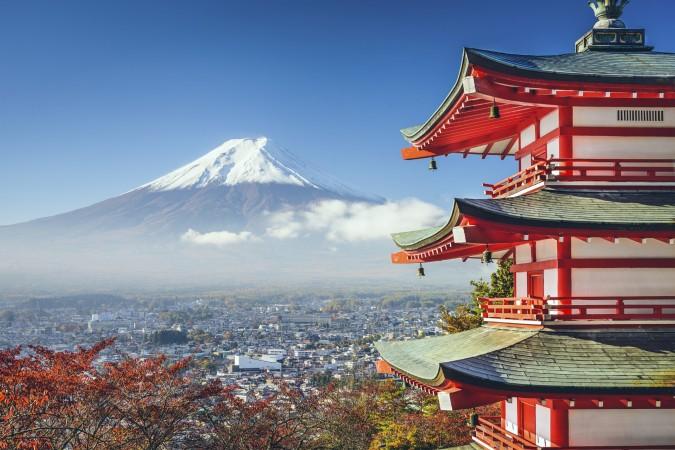
Articles for you

Experience Aboard The RV Indochine II - A Mekong Cruise With Tweet World Travel
The RV Indochine II is a luxury river cruise ship, offering an unforgettable journey through many attractions along the Mekong River. Built in 2017, this upscale vessel combines colonial elegance with modern conveniences to create a comfortable yet stylish environment for its crew and passengers. The ship’s intimate size makes it ideal for those seeking a more personal cruising experience while exploring Vietnam and Cambodia rich culture, scenery, and heritage. Whether you're gazing at the landscape from your private balcony or enjoying authentic local cuisine, RV Indochine II promises an exotic adventure like no other.

Witness Stilt Fishing In Sri Lanka: An Eco-Tourism Experience
Sri Lanka, renowned for its stunning beaches and rich cultural heritage, harbors a unique tradition that has captivated travelers for centuries: stilt fishing. This ancient practice, passed down through generations of coastal communities, blends artistry with necessity, offering a glimpse into a way of life intimately connected to the island's coastal rhythms. Stilt fishing in Sri Lanka isn't merely a means to catch fish; it's a cultural emblem, embodying the resilience and ingenuity of Sri Lanka's fishing communities.

Make Your Trip Stress-Free With The Tweet Trip App
Embark on your next adventure with confidence by downloading the Tweet Trip App, available for both iOS and Android. This essential travel companion allows you to view your detailed itinerary, stay connected with your tour guide and fellow travelers, receive real-time updates, and provide feedback effortlessly. With features like in-app messaging, emergency assistance, and location sharing, the Tweet Trip App ensures you travel smarter, stay connected, and enjoy a seamless, worry-free journey. Get started today and make the most of your travel experience with Tweet World Travel.

Pedal Through Paradise: Unveiling Cambodia's Hidden Gems on Two Wheels
The gentle whir of bicycle wheels mingles with the distant chants of monks as you glide past emerald rice paddies stretching to the horizon. This is Cambodia - a sensory explosion waiting to be experienced on two wheels. At Tweet Tours, we believe there's no better way to immerse yourself in the Kingdom of Wonder than by bicycle.
Cambodia isn't just a destination; it's a living, breathing tapestry of ancient wonders, natural beauty, and vibrant culture. Our carefully crafted cycling tours take you beyond the typical tourist haunts, offering a unique perspective on this captivating country. Ready to clip in and discover the magic of Cambodia? Let's ride!

Trekking in the Himalayas: A Journey Through Nepal's Majestic Peaks
The Himalayas rise from the earth like colossal guardians, their snow-capped peaks piercing the sky in a display of nature's raw power and beauty. Nepal, nestled at the heart of this mountain range, serves as the gateway to some of the most breathtaking trekking experiences on the planet. Here, the air is crisp and thin, filled with the promise of adventure and the whispers of ancient tales.
With Tweet Tours, as you set foot on these hallowed trails, you're not just a traveler - you're a modern-day explorer, following in the footsteps of legendary mountaineers and age-old traders. Each step takes you further into a world where nature reigns supreme and human resilience is tested against the backdrop of some of the world's highest peaks.
From the moment your boots touch the ground in Kathmandu, you'll feel the pull of the mountains. The bustling streets of the capital, with their sensory overload of sights, sounds, and smells, soon give way to serene mountain paths where the only soundtrack is the crunch of gravel underfoot and the distant tinkling of yak bells.

Exploring Mui Ne's Wonders: Unique Attractions & Local Dishes
Nestled along the southeastern coast of Vietnam, Mui Ne emerges as a captivating gem, blending natural wonders with cultural richness. Renowned for its stunning landscapes and unique attractions, Mui Ne beckons travelers seeking both relaxation and adventure in equal measure. Mui Ne's renowned beach dunes, bustling fishing towns, and excellent local food await exploration at every turn.
The allure of Mui Ne lies not only in its pristine beaches and crystal-clear waters but also in its diverse range of activities catering to every traveler's whims. Whether you're drawn to thrilling water sports like kitesurfing and windsurfing on its dynamic shores or seeking tranquility amidst the picturesque Fairy Stream, Mui Ne promises an unforgettable journey filled with discovery.
